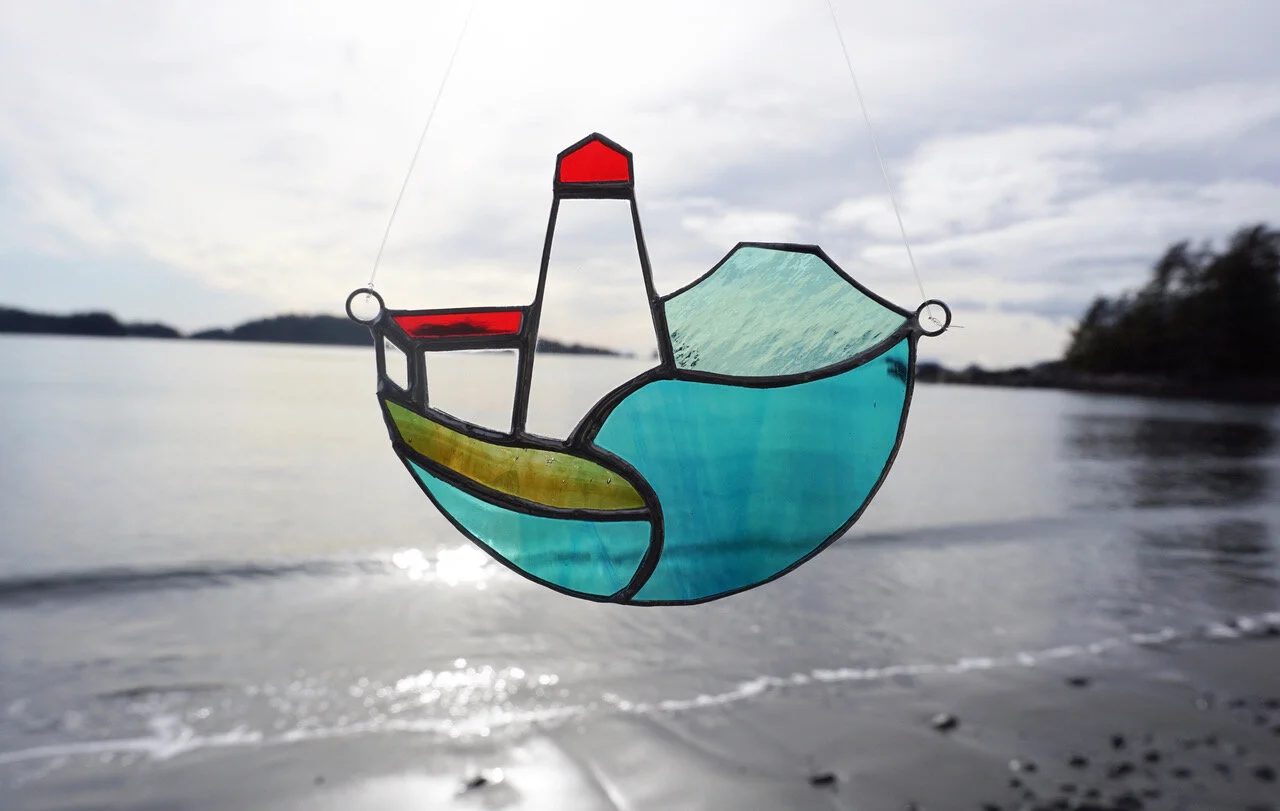This is the famous Sitka Lighthouse.
method
The origins of the Copper Method stained glass artwork, also known as Tiffany Stained Glass, are largely debated (whether Le Farge or Tiffany actually created the method). This method began in the 19th century, which "enabled three-dimensional creations" where the lead method is "limited" (Stevenson, 2004). This method, in contrast to traditional lead method stained glass artwork, is far more streamlined, safe, and widely used today.
The process of creating a piece start to finish requires seven main steps.
1. Design--The fun part! Creating a new design is exciting, and I spend most of my free time drawing up new designs. The use of a straight edge is crucial in creating a design, and it's important to create closed shapes without much curvature. A design is much like a puzzle... in theory, you should be able to cut out the shapes and piece them back together. Each shape is then numbered.
2. Tracing--Once a design is created, I then select my glass (which I buy in colored sheets). Using a light box, I then trace and number each shape with a permanent marker onto each piece of chosen glass. Permanent marker is easy to polish off of glass, and is less apt to rub off during the grinding process, where the glass will be wet.
3.Cutting--The third step in the copper method process is cutting. Cutting stained glass is tricky, as glass only breaks along straight lines (or very slightly curved lines). The best example of this would be a circle. If I were cutting a circle, I would first cut a square, then cut the edges to create an octagon, and so forth until the circle was complete. Cutting takes the most practice, in my opinion. A good cut will go a long way, as it eliminates time grinding (and wear on the grinder).
Cutting requires pressure and precision, a tough combination.
Grinding can be fun, and also tedious.
4. Grinding--Grinding is a crucial aspect of stained glass, as it makes the glass safe to work with and your pieces fit together snugly. Grinding the edges until they are smooth makes working with the glass ten times easier, and taking time for accurate grinding will exponentially aid in the soldering process.
5. Foiling--Using 7/13ths of an inch copper foil, each piece of glass is then encased. Foil should be even on both sides of the glass, and then pressed (I use a sharpie) to make sure there are no jagged edges or bumps.
6. Soldering--Once all pieces are foiled and tacked together tightly, it's time to solder! This is the best part of making stained glass, as it is both satisfying to execute and exciting to see a piece come together. Using a horse hair brush (which can withstand the chemicals), flux is applied to all copper edges. At this point, with the soldering iron hot, a spool of 60/40 lead/tin solder is applied at a slow but consistent speed along each edge. Soldering technique is difficult, and something I still work at with every piece I create. Seaming edges together isn't easy!
7. Finalization--Once a piece is finished being soldered on both sides, the piece is carefully washed. At this point, the piece is then polished thoroughly. If there is a desired patina, that may be applied once the piece is thoroughly polished. All that's left after this, is to wax seal your piece should you desire to do so, and then--voila!
reference
Stevenson, Christine. (2004). Creative Stained Glass: Modern Designs & Simple Techniques. Lark Books. p. 12.




